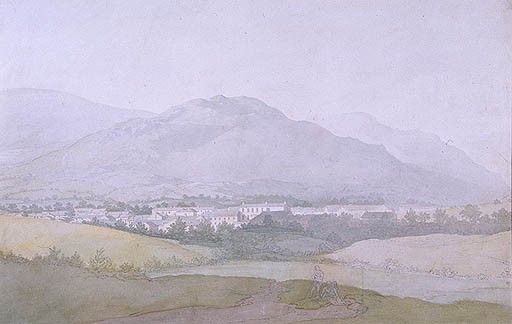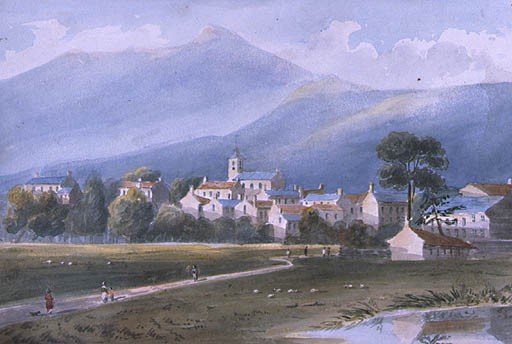The Growth of Keswick, with particular reference to its inns
The 1770s and 1780s saw the beginning of the growth of tourism in the English Lakes and the establishment of Keswick as the main centre from which to tour. Thomas Gray, for example, made the Queen’s Head in Keswick his base for six nights.
The antiquary William Hutchinson was most dissatisfied with Keswick when visiting in 1773 to research his Excursion to the Lakes: “Keswick is but a mean village, without any apparent trade; — the houses are homely and dirty; — there is a town house in the market place... but of the most uncouth architecture”. Even worse than the houses in Keswick were the inns, the “very indifferent accommodations for travellers” and the “drunken soporific Innkeeper” who was his host at an un-named Keswick inn.

Matters were better by 1777, when Mr J Bushby reported in The Gentleman’s Magazine after a stay at the Royal Oak that ”The town has been much improved of late, the inns, which before were dirty and incommodious, are now quite the reverse, and the houses are generally covered with blue slate, and rough-cast fronts, which give the town a very neat appearance. After a sound night’s repose, we were early the next morning conducted by our civil landlord to the boat, three of us in number.”
West also confirmed that in 1778 Keswick was “a small neat town... renowned for nothing so much as the lake it stands near”.

The population of Keswick town in 1793 was 1093, rising to 1350 in the first census in 1801, reflecting the “rage for the lakes” of the 1790s. From 1801 to 1851 the population nearly doubled to 2618, which was about the average growth for England but high for Cumberland. The footprint of the town on the land changed little, still described as “one long street of good houses” in 1847; the town did not expand eastwards until after the railway came in the 1860’s. Therefore, the growth involved a greater density of inhabitants and buildings within the same space, with the addition of between 12,000 and 15,000 visitors in the summer months. The obvious pressures on sanitation, noted in the 1830’s, were not addressed until the 1850’s.
Joseph Farington, General view of Keswick, Latrigg, Saddleback, part of Skiddaw &c from Crow Park, 17 October 1778, watercolour, The Wordsworth Trust.
Lady Beresford, Keswick and Moot Hall, undated,
watercolour, The Wordsworth Trust.
